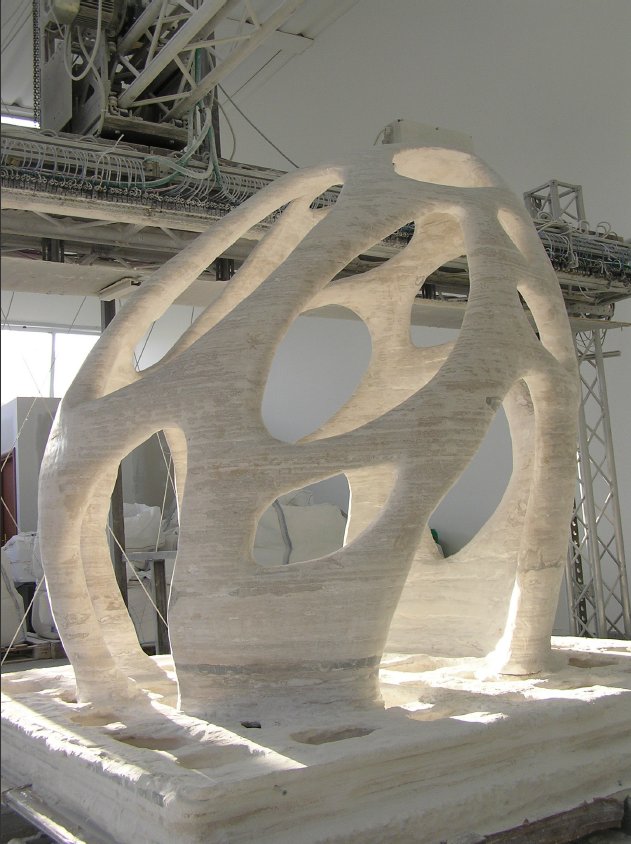Architecture Experiments with Additive Manufacturing

Concrete structure built using D-Shape additive manufacturing with concrete building materials. Photo courtesy of Automation in Construction.
Latest News
January 31, 2012
Don’t like your house? Print a new one with additive manufacturing! That sounds like something that might have been featured in a 1950s era featurette, but researchers at Loughborough University (among others) are working on using AM on a large scale. Thus far, three different processes have been developed: contour crafting, D-Shape and concrete printing.
Contour crafting uses a crane-mounted deposition head that extrudes a cement-based paste against a trowel one layer at a time to deliver a smooth finish. This particular technique has been worked on the longest, and can currently produce a structure-bearing cement wall with minimal material waste. Contour crafting also allows for the inclusion of necessary structural elements (wiring, plumbing, etc.) during the process.
The process, called D-Shape, implements powder deposition to create structures in much the same way as many standard AM machines. Each layer is built at a specified thickness and is then compacted. As a layer is deposited, it is partially hardened using a binder. A completed piece is then dug out of the loose powder and cleaned up before use.
Concrete printing uses a similar process as contour crafting, but allows for greater control of deposition. Each layer is thinner and can be used to create structures with complex internal and external shapes. It could be thought that contour crafting is best for quick creation of building materials, while concrete printing allows for more architectural freedom in design.
Below you’ll find a short video that discusses this large-scale use of AM.
Source: Automation in Construction
Subscribe to our FREE magazine, FREE email newsletters or both!
Latest News
About the Author
John NewmanJohn Newman is a Digital Engineering contributor who focuses on 3D printing. Contact him via [email protected] and read his posts on Rapid Ready Technology.
Follow DE






